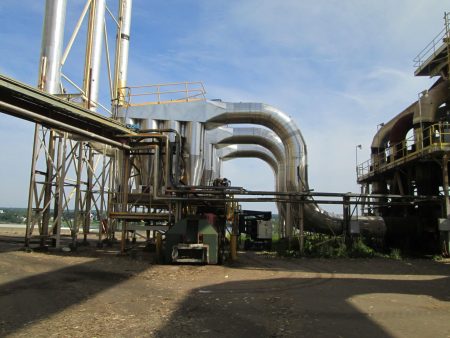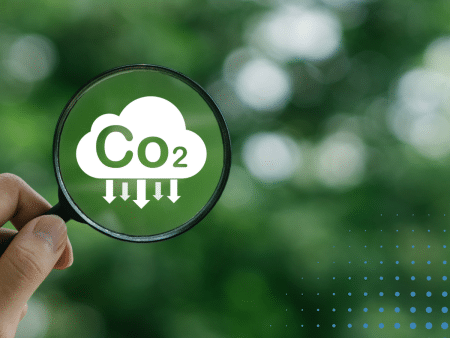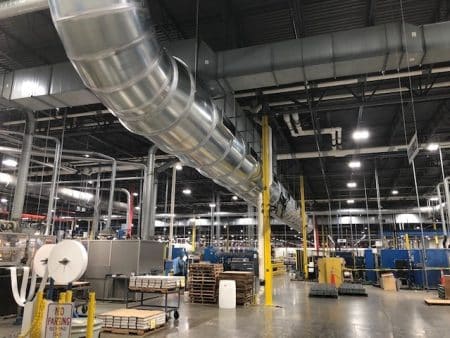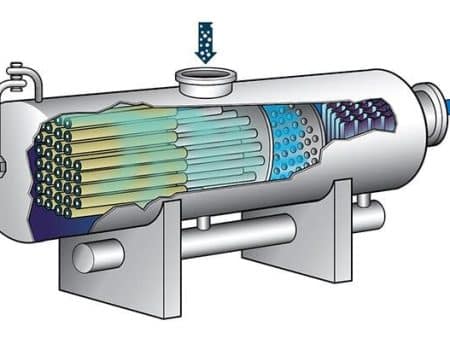In the realm of industrial air pollution control, wet scrubbers play a pivotal role in mitigating harmful emissions and maintaining environmental compliance. These versatile devices are widely used across various industries, but questions often arise regarding their functionality, applications, cost, and effectiveness. Read below to delve into the five most frequently asked questions about wet scrubbers and get comprehensive answers that shed light on this crucial and important environmental technology.
1. What is a Wet Scrubber?
A wet scrubber, often referred to simply as a scrubber, stands as a cornerstone in the field of industrial air pollution control. This ingenious device is meticulously designed to combat the harmful emissions stemming from a plethora of industrial processes. To demystify its inner workings, let’s delve into a more detailed explanation:
Components of a Wet Scrubber:
A wet scrubber comprises several integral components, each playing a vital role in the process of cleansing industrial exhaust gases. These components include:
- Inlet Duct: The journey begins with the entry of polluted exhaust gases into the scrubber system through an inlet duct. This duct directs the gas stream into the heart of the scrubber.
- Scrubbing Chamber: The core of the scrubber, the scrubbing chamber, is where the magic happens. Within this chamber, the contaminated gas encounters a carefully engineered liquid (typically water) that acts as its nemesis. The gas and liquid engage in a turbulent dance, fostering the capture and removal of pollutants.
- Liquid Spray Nozzles: Positioned strategically throughout the scrubbing chamber, liquid spray nozzles disperse the cleansing liquid in the form of fine droplets. These droplets create an intimate interaction with the gas stream, ensuring the efficient removal of pollutants.
- Exhaust Stack: Once the pollutants are trapped and absorbed by the liquid, the resulting clean air is released into the atmosphere through an exhaust stack, free from the contaminants that previously marred its purity
At its core, a wet scrubber operates on the principle of absorption. The liquid introduced into the scrubbing chamber serves as a medium that absorbs and entraps pollutants, preventing them from escaping into the environment. Through this absorption process, various types of contaminants, such as particulate matter, acid gases, and volatile organic compounds, are effectively captured and neutralized.
The interaction between the gas and liquid occurs within the scrubbing chamber, where turbulence is intentionally induced to maximize contact between the two mediums. This design ensures that pollutants are thoroughly dispersed and captured, resulting in significantly cleaner exhaust gases.
2. What are Wet Scrubbers Used For?
Wet scrubbers are utilized in a wide range of industries and applications to control emissions of various pollutants, including:
- Particulate Matter (PM): Wet scrubbers effectively capture and remove dust, ash, and other solid particles from industrial processes such as coal combustion and metal smelting.
- Acid Gases: Fume and gas wet scrubbers are highly effective in neutralizing and removing acidic gases like sulfur dioxide (SO2) and hydrogen chloride (HCl) emitted from power plants and chemical manufacturing facilities.
- Volatile Organic Compounds (VOCs): Wet scrubbers play a vital role in reducing VOC emissions from processes like painting, printing, and solvent use.
- Odorous Compounds: They are employed to control odorous emissions in wastewater treatment plants and food processing facilities.
3. Do Wet Scrubbers Remove NOx?
Wet scrubbers are primarily designed for the removal of particulate matter and certain gas pollutants, such as sulfur dioxide and hydrogen chloride. However, they are not typically used to directly remove nitrogen oxides (NOx), which are a different class of pollutants.
To address NOx emissions, selective catalytic reduction (SCR) systems and selective non-catalytic reduction (SNCR) systems are commonly employed in conjunction with wet scrubbers for comprehensive air pollution control.
While wet scrubbers excel at removing certain types of pollutants, such as particulate matter and acidic gases like sulfur dioxide (SO2) and hydrogen chloride (HCl), they are not typically employed as standalone solutions for NOx removal. This limitation stems from several factors:
- Chemical Composition: NOx compounds consist of nitrogen and oxygen, which are less amenable to absorption by the aqueous solution within a wet scrubber. The chemical properties of NOx make them less prone to dissolution in water compared to acidic gases.
- Absorption Efficiency: Wet scrubbers are optimized for capturing and neutralizing acidic gases, not NOx. Their design and operating parameters are geared toward achieving high removal efficiency for specific pollutants, but they are less effective at capturing NOx compounds.
- Alternative Technologies: To tackle NOx emissions effectively, specialized technologies such as selective catalytic reduction (SCR) and selective non-catalytic reduction (SNCR) systems are more commonly employed. These systems rely on chemical reactions to reduce NOx to less harmful compounds like nitrogen and water vapor.
Complementary Strategies
In practice, industries seeking comprehensive air pollution control often use a combination of technologies. Wet scrubbers can be paired with SCR or SNCR systems to address a broader spectrum of emissions. This hybrid approach leverages the strengths of each technology, with the wet scrubber handling particulate matter and acidic gases, while the SCR or SNCR system focuses on NOx reduction.
While wet scrubbers are not the primary method for NOx removal, they indirectly contribute to the reduction of NOx emissions. By efficiently capturing particulate matter and acidic gases, they help maintain a cleaner and more stable combustion environment, which can lead to lower NOx formation in the first place. In this way, wet scrubbers are an essential component of a comprehensive emission control strategy.
In conclusion, wet scrubbers are not designed as standalone solutions for NOx removal due to the chemical nature of NOx compounds. To effectively address NOx emissions, industries often employ specialized technologies like SCR and SNCR systems in conjunction with wet scrubbers. By understanding the strengths and limitations of each technology, industries can implement comprehensive air pollution control strategies to meet stringent regulatory requirements and improve air quality.
4. Are Wet Scrubbers Expensive?
The cost of implementing a wet scrubber system can vary widely depending on factors such as the specific application, gas volume, pollutant concentration, and regulatory requirements. While wet scrubbers do require an initial investment in equipment and installation, they often provide long-term cost savings through reduced regulatory fines, improved process efficiency, and lower maintenance costs.
It’s essential to conduct a cost-benefit analysis to determine the feasibility and economic advantages of using a wet scrubber for your specific industrial operation.
For more information about what a wet scrubber might cost for your organization please contact CECO Environmental today to speak with a qualified representative that can help you learn more about wet scrubbers and what one might cost.
5. Where are Wet Scrubbers Used?
Wet scrubbers find application in various industries and settings, including:
- 发电厂: They are employed to control emissions from coal-fired and natural gas power plants.
- Chemical Manufacturing: Wet scrubbers help neutralize and remove acidic gases in chemical production processes.
- Metal Refining: They are used in smelting and refining operations to capture particulate matter and acid gases.
- 废水处理: Wet scrubbers control odorous emissions in sewage treatment plants.
- 食品加工: They mitigate odors and VOC emissions in food production facilities.
- 制药: Wet scrubbers assist in maintaining air quality in pharmaceutical manufacturing.
Wet scrubbers are a vital tool in the arsenal of industrial air pollution control measures, providing effective removal of various pollutants from exhaust gases. Understanding their purpose, applications, and cost considerations is essential for industries looking to meet environmental compliance standards and reduce their impact on the environment. By incorporating wet scrubbers into your operations, you can not only improve air quality but also contribute to a cleaner and healthier planet.



